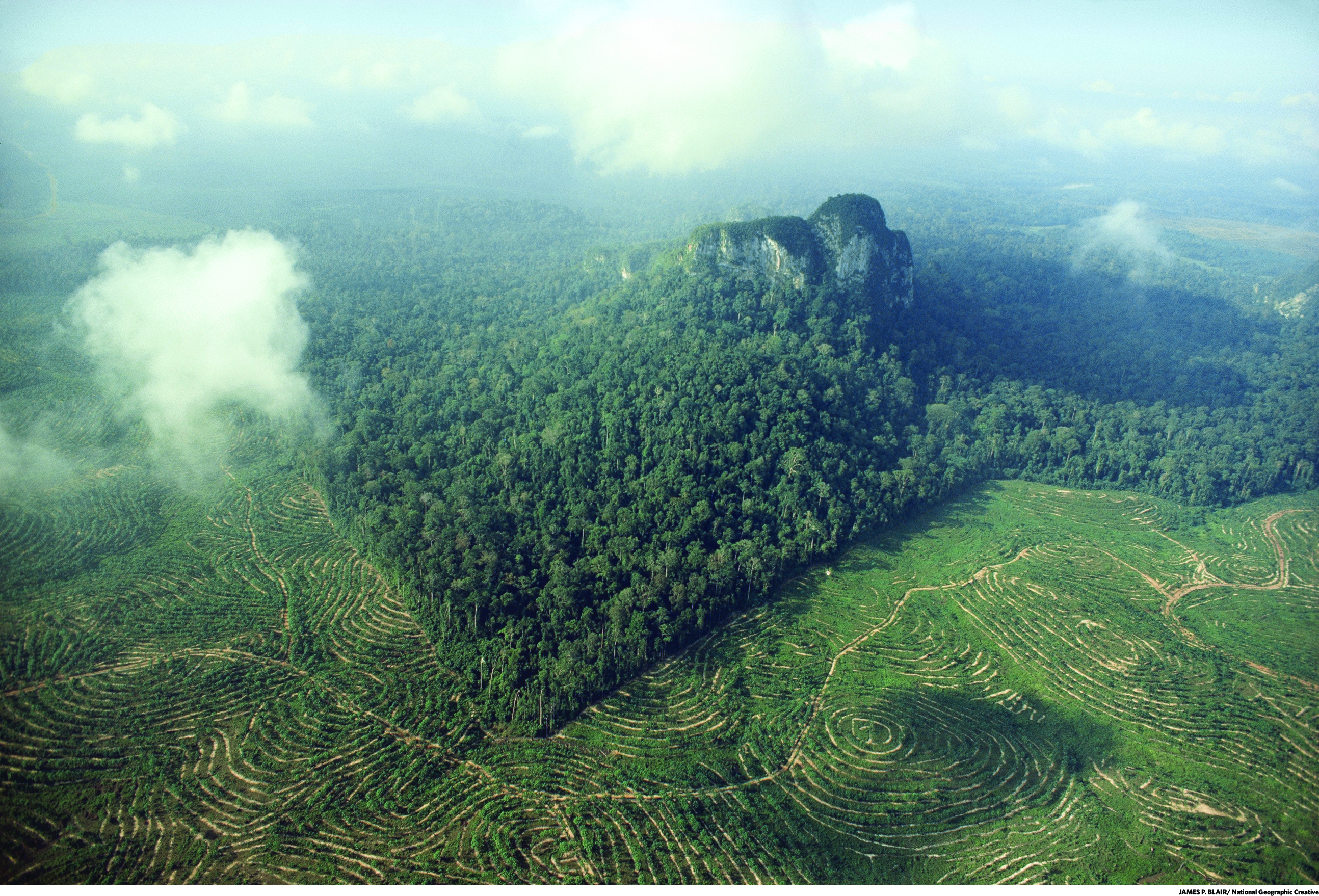Chapter Introduction
CHAPTER 12
BIODIVERSITY
PALM PLANET
Can we have tropical forests and our palm oil too?

CORE MESSAGE
The variety of life on Earth is tremendous. This biodiversity provides important ecological services to ecosystems; we depend on these services for things like food, medicine, and economic development. The decline of biodiversity has serious ramifications for other species as well as human well-being, so we should evaluate actions that threaten biodiversity and take steps to reduce the impact when possible.
AFTER READING THIS CHAPTER, YOU SHOULD BE ABLE TO ANSWER THE FOLLOWING GUIDING QUESTIONS
Even before his plane landed in Sumatra, Laurel Sutherlin could tell the scene awaiting him would be worse than expected. They were still 30,000 feet over the Java Sea, and already a sickly haze of yellow smoke seemed to be enveloping the aircraft. The 30-something naturalist and environmental crusader had traveled all the way from California to see firsthand the impact the burgeoning palm oil industry was having on this South Pacific island.
Palm oil comes from the waxy orange fruits that sprout from oil palm trees. Oil can be extracted from both the flesh and the seed of the fruits, and it makes up about 45% of the planet’s edible oil production. In recent years, it has made its way into a mind-boggling list of consumer products—foods like chocolate, peanut butter, cereal, and biscuits, and also cosmetics, shampoos, and other household items such as mouthwash, diaper cream, and toilet cleaner. By some accounts, about half of all packaged food and household products in the United States contain palm oil. In the United States alone, palm oil consumption has increased six-fold since 2000, to the lofty sum of 1.25 million metric tons (1.4 U.S. tons) per year. About 95% of all that palm oil comes from Southeast Asia—in particular, from Malaysia and the Indonesian island of Sumatra, where Sutherlin’s plane was now landing.
His eyes and nose were assaulted with smoke the instant he stepped off the plane. “I actually had to suppress an initial panic that I would suffocate from the smoke,” he would later recall. In fact, he had been lucky to land at all; air traffic would be canceled later that day due to poor visibility. Sutherlin had heard stories about the devastation wrought by deforestation. But he was not prepared for this.

Since the early 1990s, more than 8 million hectares (20 million acres) of rain forest (about the size of Maine) have been cleared in Southeast Asia to make way for oil palm plantations. The environmental costs of this clearing are expected to be far-reaching. For one thing, such rapid and colossal loss of rain forest contributes to regional and global climate change and is almost certain to accelerate global warming. For another, forest loss contributes to soil erosion, water pollution, and flooding—not to mention a scarcity of resources on which intricate forest communities depend. Rampant air pollution from forest clearing poses a significant threat to human health in the region. But the most immediate consequences, by far, will be visited upon the region’s wildlife. Fewer than 50% of the species normally found in the natural forest will be found in oil palm plantations. Mammals, in particular, tend to avoid the plantations; only about 10% of the original mammalian fauna are typically present. Scientists estimate that converting a forest into an industrial oil palm plantation results in the death or displacement of more than 95% of the orangutans living there. The habitat loss also impacts countless bird, insect, and plant species, many of which fail to thrive or even return at all because other species on which they depend are gone.
“When you look at a candy bar or package of crackers in a grocery store, or a jar of peanut butter in your kitchen, it’s difficult to imagine that it has anything to do with orangutans going extinct,” Sutherlin says. “But the link is actually quite direct.”